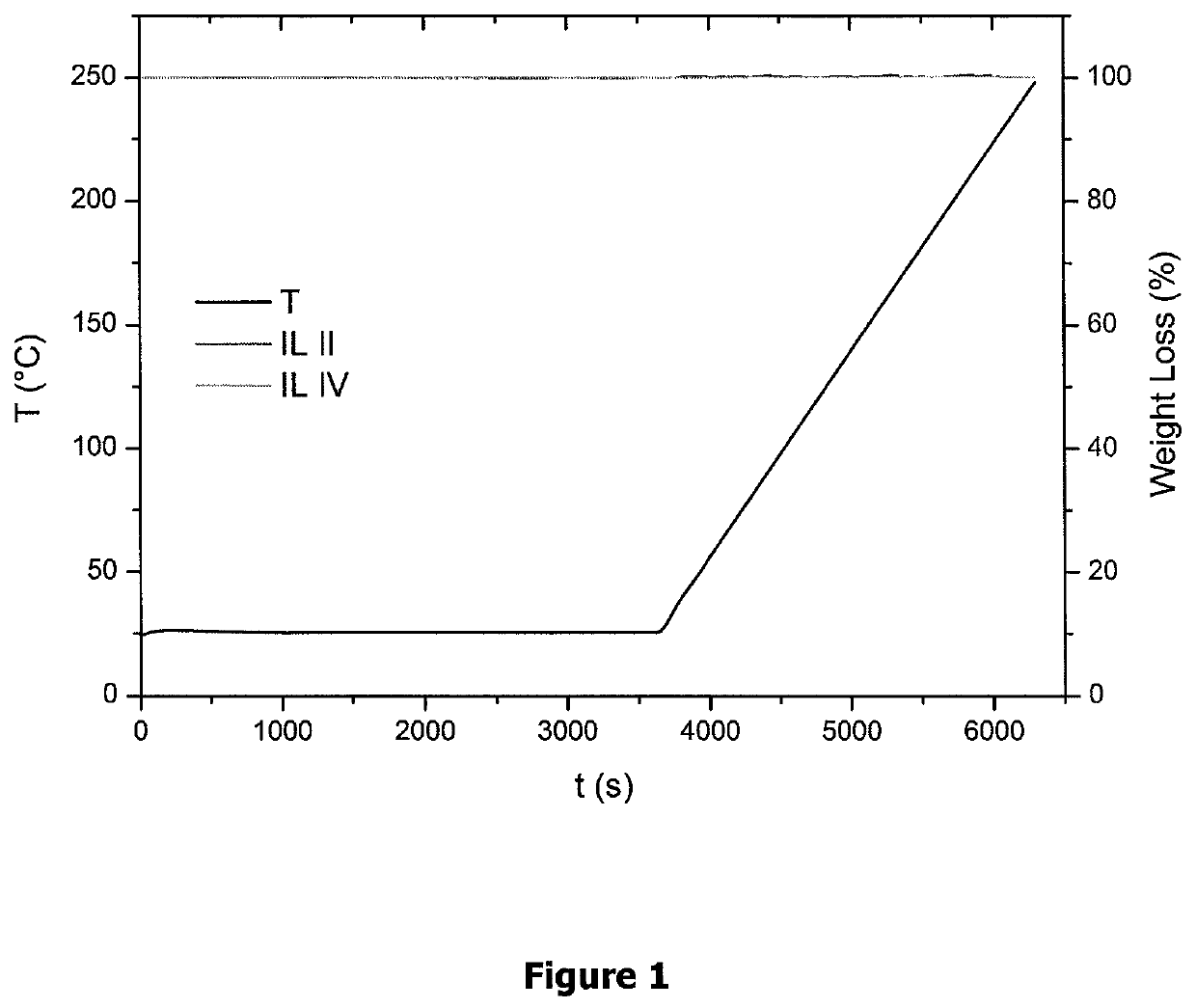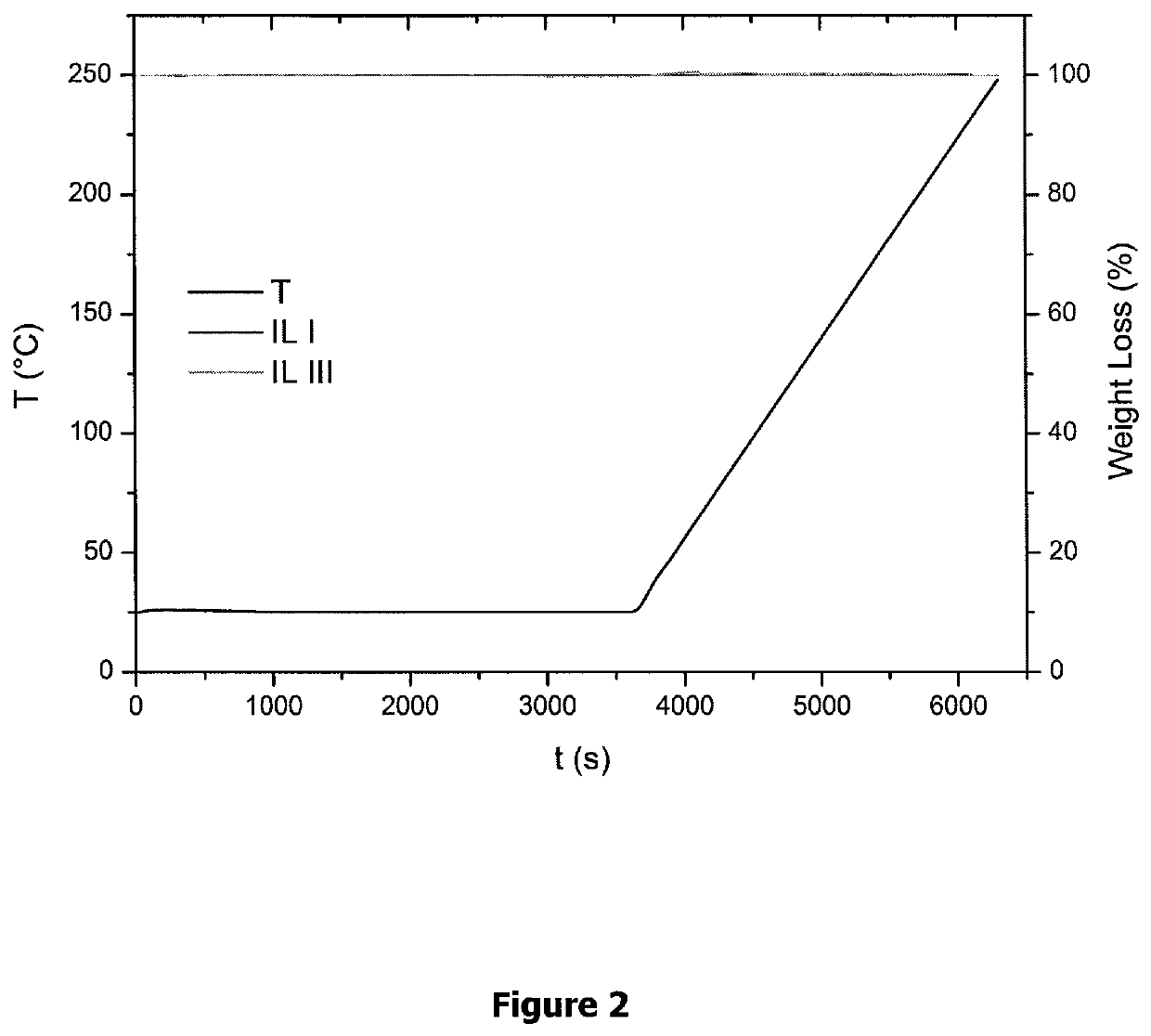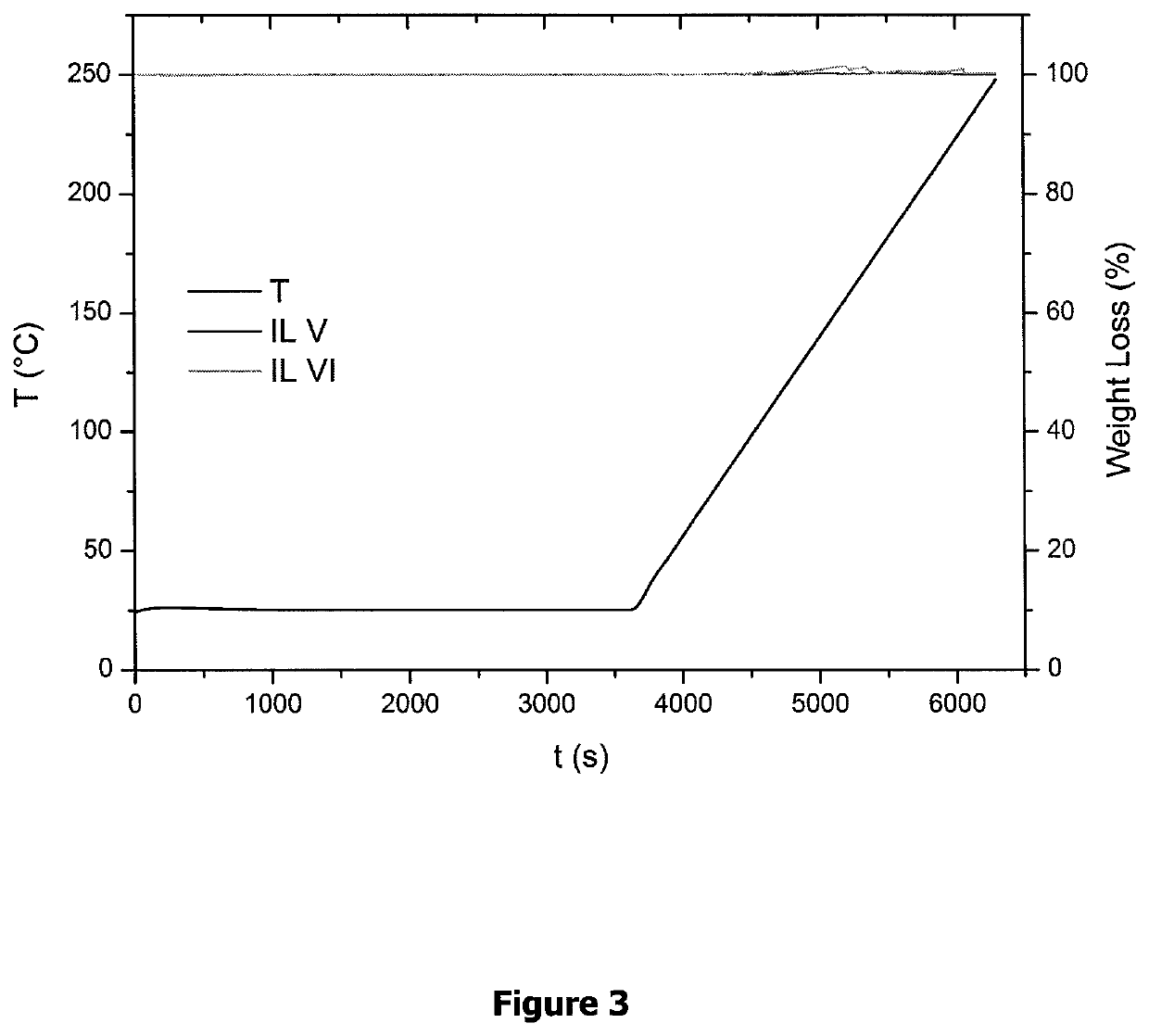Fluorinated ionic liquids with high oxygen solubility for metal-air batteries
a technology of fluorinated ionic liquids and metal-air batteries, applied in the field of ionic compounds, can solve the problems of ether-based organic solvent volatility, reduce battery performance, and increase the risk of ether-based organic solvents being volatile, and achieve the effect of less contamination with water
- Summary
- Abstract
- Description
- Claims
- Application Information
AI Technical Summary
Benefits of technology
Problems solved by technology
Method used
Image
Examples
example 1
/ Characterization of IL II
Precursor: N-((2,2,3,3,4,4,5,5-octafluoropentoxy)ethyl)pyrrolidine
[0094]The synthesis of the first precursor for each IL called with Roman numbers was based on the paper of Kim, Jinwi, Rajendra P. Singh, and Jeanne M. Shreeve. “Low melting inorganic salts of alkyl-, fluoroalkyl-, alkyl ether-, and fluoroalkyl ether-substituted oxazolidine and morpholine.”Inorganic Chemistry 43, no. 9 (2004): 2960-2966.
[0095]
[0096]Sodium hydride (2.20 g, 91.9 mmol) in dry THF (60 mL) was cooled down to 0° C. 2,2,3,3,4,4,5,5-Octafluoro-1-pentanol (10.23 mL, 73.52 mmol) was added dropwise and the mixture was stirred at room temperature for 1 h. Then, N-(2-Chloroethyl)pyrrolidine hydrochloride (12.50 g, 73.52 mmol) was added and the mixture was stirred for additional 1 h at RT. Afterwards, the mixture was refluxed at 70° C. for 2 h and at 65° C. for 22 h. After this time, water was added to the mixture and the product was extracted with DCM and the DCM phase was dried with MgSO...
example 2
/ Characterization of IL IV
Precursor: N-((Trifluoroethoxy)ethyl)pyrrolidine
[0110]
[0111]Sodium hydride, 60% suspension in mineral oil (4.34 g, 106 mmol) in dry THF (60 mL) was cooled down to 0° C. 2,2,2-Trifluoroethanol (4.30 mL, 59 mmol) was added dropwise and the mixture was stirred at room temperature for 1 h. Then, 1-(2-Chloroethyl)pyrrolidine hydrochloride (10.0 g, 59 mmol) was added and the mixture was stirred for additional 1 h at RT. Afterwards, the mixture was stirred at 70° C. for 18 h. After this time water was added to the mixture and the product was extracted with diethyl ether. After evaporation of the solvents, the crude product was re-dissolved in diethyl ether and purified on silica gel column. 2.59 g of yellow oil was obtained (Yield: 22%).
[0112]1H NMR (300 MHz, CDCl3): δ=3.86 (q, 2H, J=8.7 Hz), 3.76 (t, 2H, J=5.8 Hz), 2.57 (t, 2H, J=5.8 Hz), 2.57 (m, 4H), 1.79 (m, 4H) ppm
Precursor: N-((Trifluoroethoxy)ethyl)-N-methyl Pyrrolidinium Iodide
[0113]
[0114]N-((Trifluoroetho...
example 3
/ Characterization of IL I
Precursor of the IL: N-((Trifluoroethoxy)ethyl)piperidine
[0124]
[0125]Sodium hydride (3.33 g, 139.0 mmol) in dry THF (60 mL) was cooled down to 0° C. 2,2,2-Trifluoroethanol (7.93 mL, 108.6 mmol) was added dropwise and the mixture was stirred at room temperature for 1 h. Then, 1-(2-Chloroethyl)piperidine hydrochloride (20.0 g, 108.6 mmol) was added and the mixture was stirred for additional 1 h at RT. Afterwards, the mixture was stirred at 78° C. for 11 h and at 65° C. for 23 h. After this time water was added to the mixture and the product was extracted with DCM, to give reddish oil. Dissolution of the oil in DCM and filtration yielded the unreacted piperidine substrate that was filtered off and oil that was purified on silica gel. Two subsequent column chromatography purifications were applied: one in pure DCM and one in 20% heptane / EtOAc to yield slightly yellow oil. The product has low vapour pressure, some product lost on solvent evaporation. (m=4.05 g, 1...
PUM
| Property | Measurement | Unit |
|---|---|---|
| discharge voltage | aaaaa | aaaaa |
| solubility | aaaaa | aaaaa |
| solubility | aaaaa | aaaaa |
Abstract
Description
Claims
Application Information
 Login to View More
Login to View More - R&D
- Intellectual Property
- Life Sciences
- Materials
- Tech Scout
- Unparalleled Data Quality
- Higher Quality Content
- 60% Fewer Hallucinations
Browse by: Latest US Patents, China's latest patents, Technical Efficacy Thesaurus, Application Domain, Technology Topic, Popular Technical Reports.
© 2025 PatSnap. All rights reserved.Legal|Privacy policy|Modern Slavery Act Transparency Statement|Sitemap|About US| Contact US: help@patsnap.com



